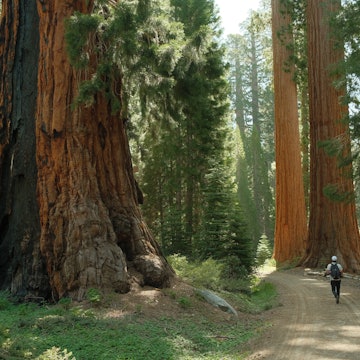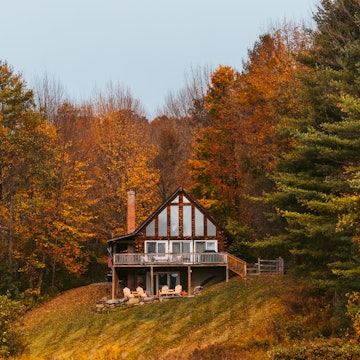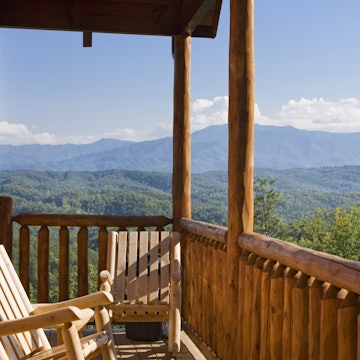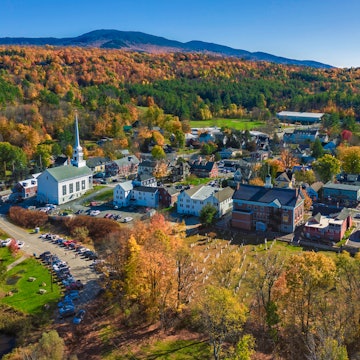

Grand Prismatic Spring. Berzina/Shutterstock
America’s oldest national park, Yellowstone, has captivated visitors since the 1870s. Lofty mountain peaks, thundering waterfalls and abundant wildlife are all big draws of this 3471-square-mile park, but even more extraordinary are Yellowstone’s geothermal features. This is the land of boiling geysers, gurgling mud pools and steaming lakes. Traveling in this remote corner of northwestern Wyoming can sometimes feel like exploring another planet.

When should I go to Yellowstone?
Most people plan a trip during the summer season, from June to early September. This is when all of the roads, campgrounds and trails are open (though snow is still possible at higher elevations through early July). Unfortunately, it’s also a very busy time with congested roads and sizable crowds at key destinations (like Old Faithful). What's more, due to staffing cuts, the National Park Service is stretched this year. Travelers can expect longer wait times, fewer services and the potential closure of certain areas. Stay prepared with this guide.
Beat the crowds and elevated accommodation prices by coming just before or after the high season (May or October). For a different perspective on Yellowstone, visit during the winter when access is generally by special snow coach (buses with huge snow tires). Several lodges in the park stay open in the winter, and you can arrange tours by ski and snowshoe.
How much time should I spend in Yellowstone?
With five far-flung entrances, Yellowstone is enormous, and you could easily spend a week here and not run out of things to see and do. If you have only a long weekend, spend your first day on the west side of the park, where you’ll find the most impressive geothermal features – like Old Faithful, Norris Geyser Basin and Mammoth Terraces.
On day two, head east to the Grand Canyon of the Yellowstone, then have a look at scenic Yellowstone Lake – particularly the area around West Thumb, which also has geysers and bubbling hot springs.
If you have four days to spend in the park, fit in some wildlife watching in the Lamar Valley, squeeze in a challenging hike or two and enjoy a more measured pace at park visitor centers. Park-run museums near Old Faithful and the Grand Canyon of the Yellowstone give insight into the park’s natural history, its wildlife and the geological forces at work deep beneath the earth’s surface.
Is it easy to get in and around Yellowstone?
The main gateway airports are in Jackson (56 miles), Bozeman (65 miles) and Billings (129 miles). There’s also the tiny West Yellowstone airport, though it has limited and pricey summer services. Once you land, rent a car as there is no bus service in the park.
With lots of cars on park roads, plan carefully: head out early to your top destination of the day to avoid traffic snarls, and have patience. Traffic jams are often caused by bison, who sometimes decide they want to take a stroll right down the middle of the road. Just remember that this is their land, and we’re the interlopers. You’ll simply have to wait until they move safely out of the way.
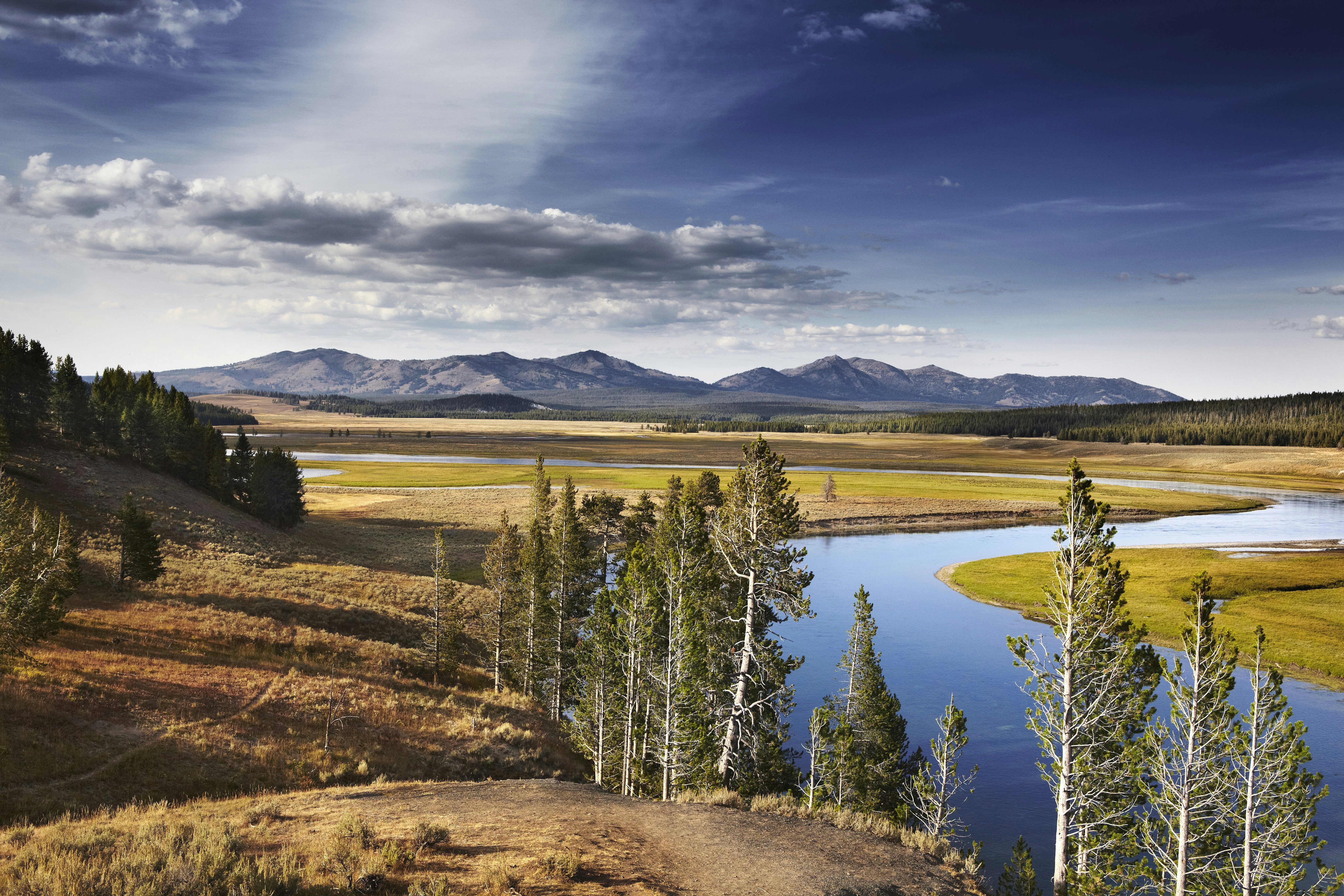
Top things to do in Yellowstone
The star of Yellowstone is Old Faithful, so named for its regular eruptions, which typically happen every 90 minutes. There are many fine vantage points for seeing the thundering geyser, including the observation deck of the Old Faithful Inn, where you can purchase and enjoy a cold drink (Old Faithful Ale, naturally) while watching nature’s finest show. Afterward, explore the Geyser Basin, which is packed with geothermal wonders.
A nearby must-see is the Grand Prismatic Spring with its psychedelic hues. Take the easy-going boardwalk loop, but for a better perspective, be sure to also take the short hike up the Fairy Trail to the overlook above the spring.
The Grand Canyon of Yellowstone is another spectacular site that should figure high on any itinerary. The dramatic canyon snakes for some 20 miles, and its fairly steep walls boast a range of colors in subtle shades of orange, pink and auburn. Several waterfalls thunder through the canyon: Head to the Brink of the Lower Falls to stand just above the roaring cascade, then lose the crowds by taking a hike along the North Rim, where you’ll enjoy some sweeping views of the falls as you walk through the forests beyond the canyon’s edge.
Most visitors stick to the boardwalk trails, but if you’re eager to see the backcountry, you’ll have plenty of options among the park’s 1000 miles of trails. For bragging rights, make the climb up Mt Washburn, which sits at an elevation of 10,219 feet. The 6.8-mile roundtrip takes you to an overlook with 360-degree views, and there’s a good chance of spotting wildflowers and bighorn sheep along the way.
My favorite thing to do in Yellowstone
I love to rise early and head to the Lamar Valley. Sometimes referred to as the Serengeti of the US, the Lamar Valley is home to some of the largest herds of bison and elk in North America. Just after sunrise, the wildlife-watching is at its best, and there’s a good possibility of seeing not just the big ungulates, but also pronghorn (North America’s fastest land animal), moose and bighorn sheep. On lucky days, I’ll even see wolf packs, which come to hunt elk – their favorite prey.

How much money do I need for Yellowstone?
Unless you’re camping, you’ll need a decent budget to properly experience Yellowstone. In-park lodging soars during the short summer season, and the limited accommodation options in nearby towns are also expensive. Factor in the cost of car rental and fuel as well, since it’s not practical to explore the park without a vehicle (unless you’re coming in the winter). If you’re willing to rough it a bit, a small two-person cabin without bathrooms starts at US$150 per night.
Some average daily costs are as follows:
Lodge room in the park: US$150 to US$600 per night
Hotel room outside the park: US$250 per night
Park pass (valid 7 days): US$35 per vehicle
Campsite: US$25 to US$50 per night
Full-day tour: from US$200 per person
Coffee drinks: US$4 to US$8
Craft beer at the bar: US$6 to US$9
Lunch: US$12 to US$20 per person
Upscale dinner for two: US$120 to US$200

Bears and hiking
When hiking in grizzly country, stay alert and make plenty of noise – and avoid hiking alone. Never hike before dawn or after dusk. If you encounter a bear at close range, don’t run. Instead, back away slowly. If it charges, deploy your bear spray. Never hike in Yellowstone without carrying bear spray and keeping it within easy reach (on your belt, not buried in your backpack). Purchase a canister when you arrive (you can’t transport it on planes). It’s available at many stores, including within the national park.
Leave the fuzzy cows alone
In truth, bears aren’t the most lethal creatures in Yellowstone. More people have been injured or killed by bison. Never approach bison or other wildlife, and give ample space to these seemingly docile creatures, who will charge if they feel threatened.

Geothermal hazards
Stay on the trail when hiking, and don’t stray from the boardwalk when visiting geothermal areas. Ignoring these warning signs can land you in a lot of trouble with the law (as actor Pierce Brosnan discovered in 2024 when he walked off of a designated trail). Plus, it's unsafe; you could be seriously hurt if you fall into a boiling spring or a steam vent.
Packing tips
Even on a cloudless summer day, pack a waterproof shell jacket and a knit cap. Wear layers that you can peel off as needed. The mountain weather is ever-changing, so always be prepared for the rain and cold.
Wildlife-watching etiquette
If you see something from the road and want to have a look, don’t park in the road and block traffic. Use pullouts and make sure your wheels are all the way off the main road when parking.









